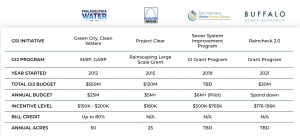The Sewage-Free Streets and Rivers campaign’s third workshop on the CSO Long Term Control Plans focused on assisting community members develop comments on their towns’ LTCPs. The workshop started off with a few tips for writing comments:
- Share your personal experiences and stories.
- You are not expected to be a technical expert.
- Your experience as a community member is valuable and needed input.
- Share how these plans could impact your community/neighborhood/city
- Ask questions.
- You do not need to comment on every aspect of the report.

Six speakers addressed water quality, environmental justice, green infrastructure, financing, climate change, and public participation. Here are key takeaways from the presentations:
The Program Director of the NY – NJ Harbor Estuary Program, Rob Pirani presented water quality goals of the CSO permit and led a discussion on the water quality issues to consider in the LTCPs. Pirani pointed out that, while the CSO permits may not solve the overall water quality issues, decisions related to the CSO permits will affect how people access outdoor recreational spaces and the use of water bodies.
Environmental justice considerations were presented by New Jersey Environmental Justice Alliance Executive Director Melissa Miles. She emphasized that an environmental justice lens should be used to evaluate all of the aspects of the plans, from the siting of green infrastructure to rate structures. Cumulative impacts should be considered as we implement solutions to CSOs. Miles suggested that we need to develop educated and cooperative municipalities on environmental justice issues.
One of the solutions to CSOs that has multiple benefits for communities is green infrastructure (GI). Rutgers Water Resource Program Director Chris Obropta shared the many types of GI that could be implemented through these plans. He stressed that GI needs to be implemented immediately rather than pushed to later phases of the plans. Hesitation to implement GI typically comes from uncertainty about the cost. Obropta explained that “cost is variable” but is generally cheaper than gray infrastructure and requires minimal maintenance. He emphasized the need to get the community involved and think creatively about where GI can be used. Shaping the CSO permits to optimize the use of GI will have health benefits, transform communities, and improve the quality of life.
Financing looked at through an environmental justice lens reveals that right now the plans may be compliant but are not equitable, and overlooking this will perpetuate inequities. Director of Urban Water Infrastructure and senior attorney in NRDC’s Healthy People and Thriving Communities Program, Larry Levine, explained how using financing alternatives can actually be used as a tool to help solve inequalities. He walked through various financing options and considerations, including partnerships, various rate structures, stormwater utility fees, rules and regulations, as well as loans and grants. He said that if you rely on rate increases to fund the plans but don’t look to solve the affordability issues, you’re going to perpetuate inequalities and use a longer compliance schedule as an excuse to fall back on.
Principal and founder of Meliora Designs, Michele Adams, explained the relation of climate change to rainfall considerations in the CSO plans. Resilience is the ability to recover or adapt easily to stress and disturbance. Climate change induced stressors include more frequent hurricanes, increased flooding, higher temperatures, and these stressors will most directly impact infrastructure. The CSO plans should consider infrastructure solutions and locations in relation to sea level rise, increased rainfall volume, and effects of rising temperatures on humans. Green infrastructure is key for restoring natural processes to manage water and mitigate urban heat islands. Communities benefit from investments in multiple projects that address multiple issues.
Meishka Mitchell, vice president at Cooper’s Ferry Partnership spoke about the importance of public participation in the CSO planning process. Current guidelines include having a two-way dialogue with the public and the creation and engagement of a supplemental CSO team. However, beyond these minimum requirements there is a spectrum of levels of public participation. Participation levels ranging from lowest to highest include: inform, consult, innovate, collaborate, and empower. The goal is to engage cities at the collaborate and empower levels and push them to be forward-thinking. Higher level participation can include surveys and activities to understand public preferences, as well as participatory and active decision-making power. Currently, most LTCPs are far from the highest public participation levels.
The overall message from speakers to participants was of the importance of reviewing the CSO plans with an awareness of inequity, and opportunities to address multiple issues. It is easy to fulfill the minimum requirements and be in compliance without advancing equity. Attendees were encouraged to look through an environmental justice lens, at the makeup of the town, and its vulnerabilities, through every section of the plans. Plan comments should evaluate how these plans can take into account vulnerable populations, whether they perpetuate inequality, and where they could include creative solutions to multiple issues. Consider how you would like to spend your money and how to take advantage of opportunities to ensure best results. The LTCPs will impact the quality of life within communities over the next 30 years. These plans are a serious milestone and how they are shaped will impact future generations.

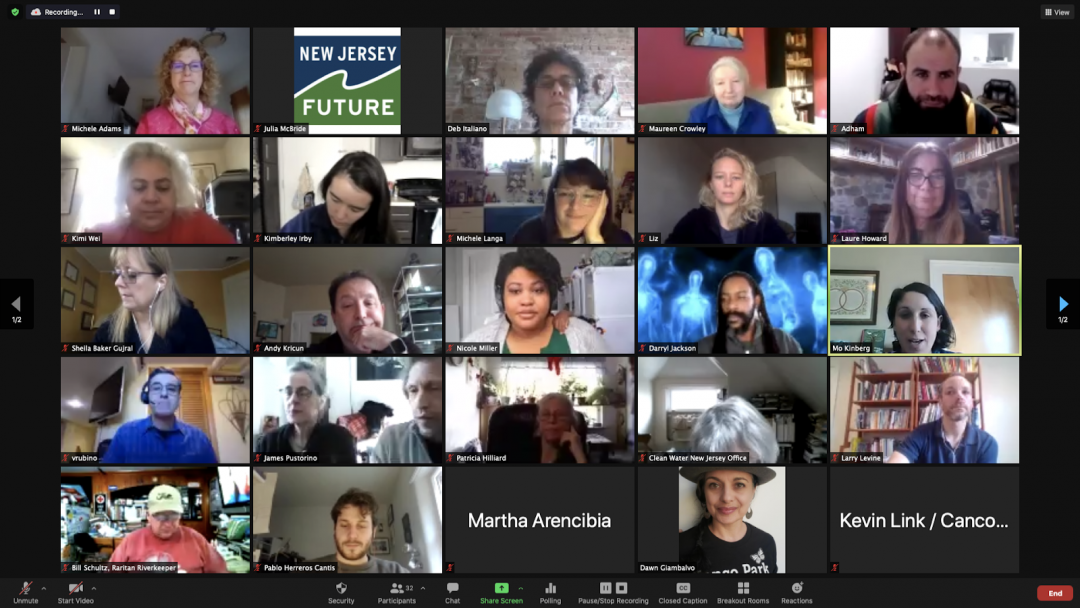

 Overall, we found that the LTCPs are designed to meet existing water quality standards but do not consider future water quality standards. The reports do not address the level of water quality the local community wants to attain, nor do they address improving access to our waterfronts.
Overall, we found that the LTCPs are designed to meet existing water quality standards but do not consider future water quality standards. The reports do not address the level of water quality the local community wants to attain, nor do they address improving access to our waterfronts.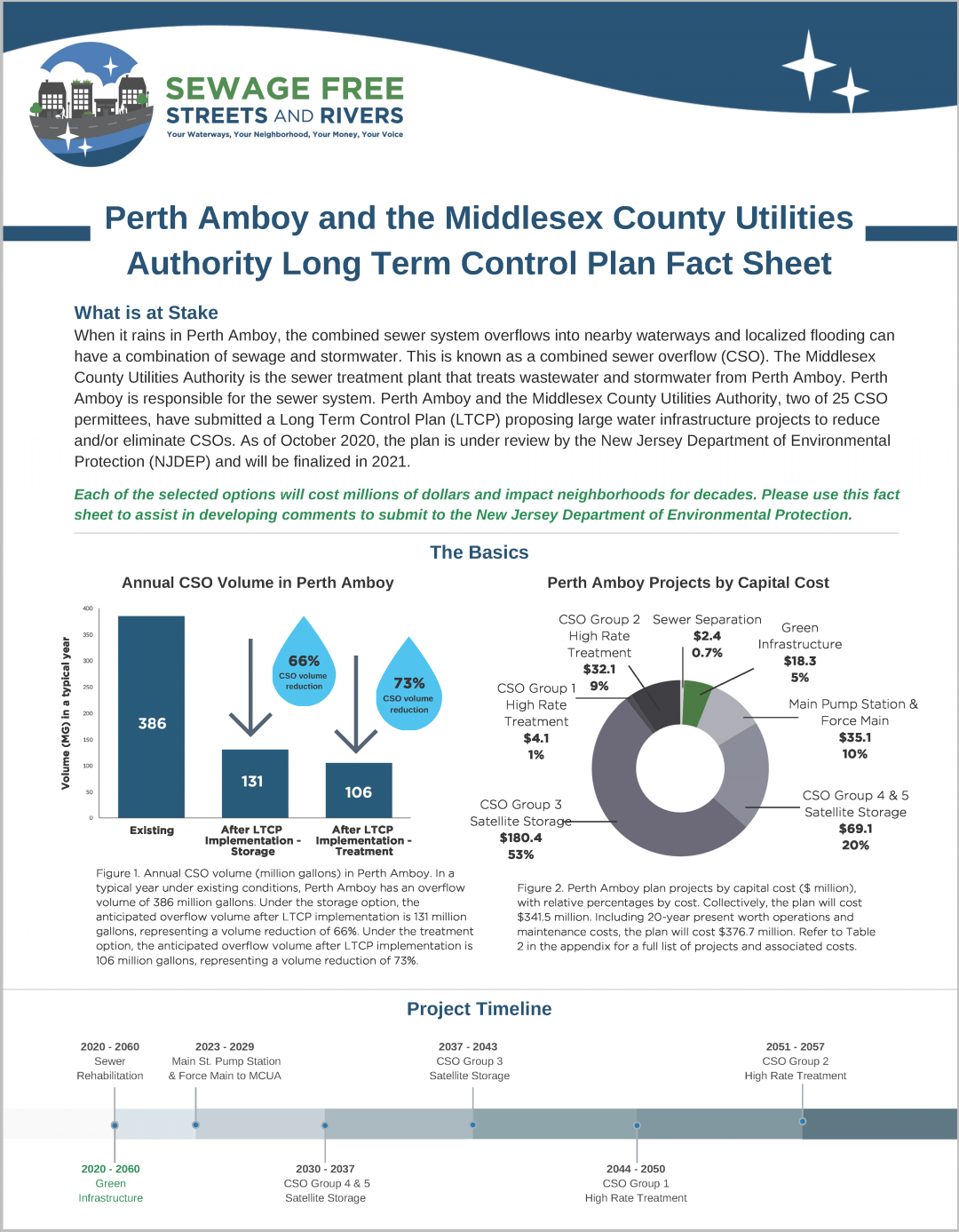
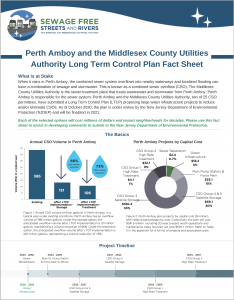 Communities in New Jersey with combined sewer systems have submitted their plans to reduce combined sewer overflows into local waterways. The implementation of these plans could cost between $2.5 billion and $3.8 billion, and the proposed timeframes for implementation span 20 to 40 years. Facts like these can be found in the Long Term Control Plans but you need to know where to find them.
Communities in New Jersey with combined sewer systems have submitted their plans to reduce combined sewer overflows into local waterways. The implementation of these plans could cost between $2.5 billion and $3.8 billion, and the proposed timeframes for implementation span 20 to 40 years. Facts like these can be found in the Long Term Control Plans but you need to know where to find them.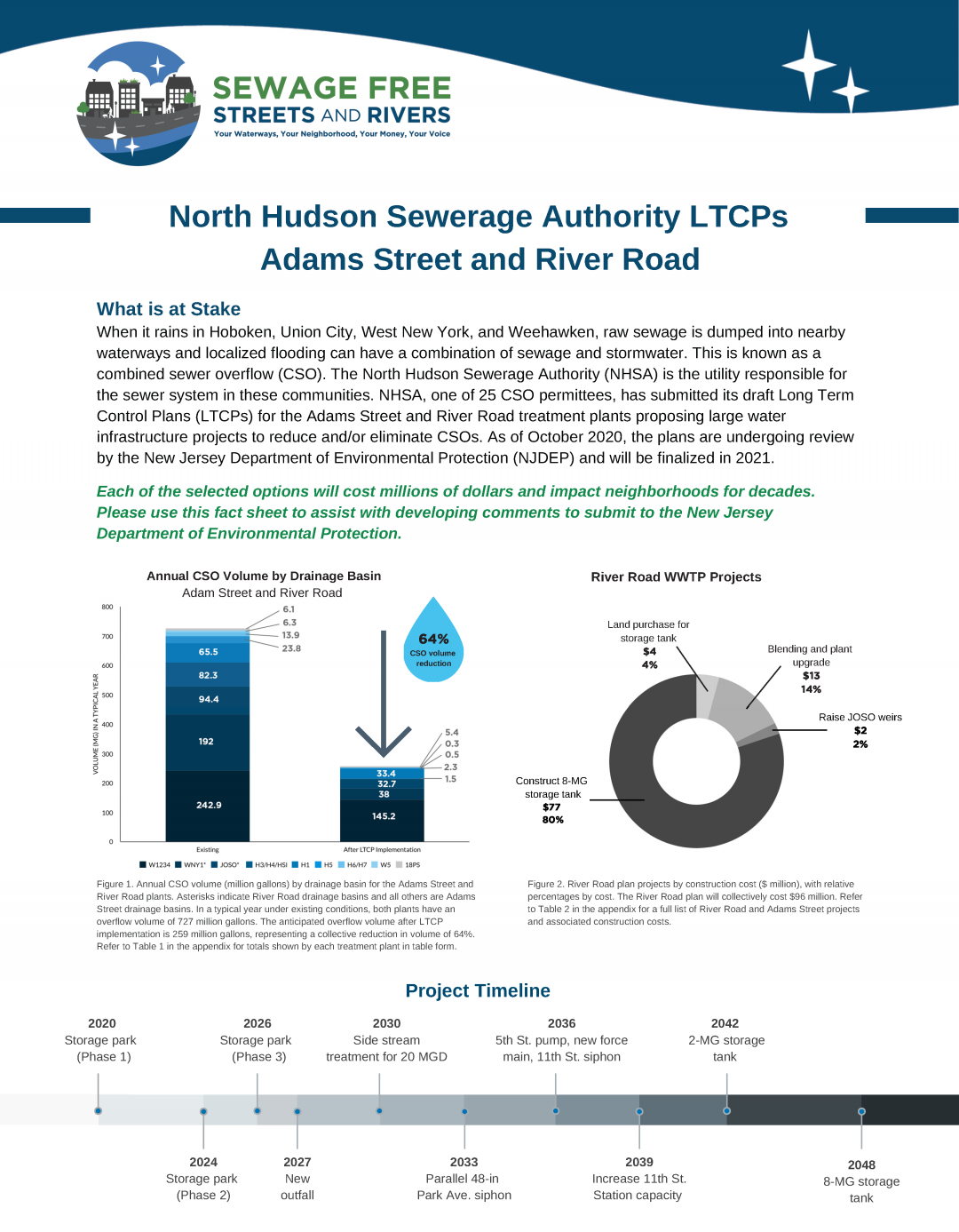
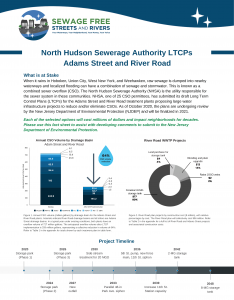 Get the facts on the combined sewer overflow (CSO) Long Term Control Plans (LTCPs). The plans include the selected water infrastructure projects, costs and project timeline. Each of the selected options will cost millions of dollars and impact neighborhoods for decades. Please use this sample fact sheet to assist with developing comments to
Get the facts on the combined sewer overflow (CSO) Long Term Control Plans (LTCPs). The plans include the selected water infrastructure projects, costs and project timeline. Each of the selected options will cost millions of dollars and impact neighborhoods for decades. Please use this sample fact sheet to assist with developing comments to 

 Thursday, January 7, 1:00 pm – 3:00 pm, and Friday, January 8, 10:00 am – noon. Register
Thursday, January 7, 1:00 pm – 3:00 pm, and Friday, January 8, 10:00 am – noon. Register 


 The deadline not only kicked off the Department of Environmental Protection (NJDEP) review of the plans, but also a public review of the plans and provides an opportunity for community members to submit comments. All of the plans that were submitted to NJDEP will be posted online
The deadline not only kicked off the Department of Environmental Protection (NJDEP) review of the plans, but also a public review of the plans and provides an opportunity for community members to submit comments. All of the plans that were submitted to NJDEP will be posted online 
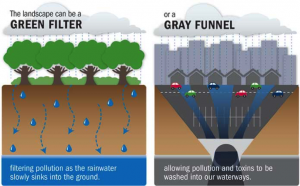
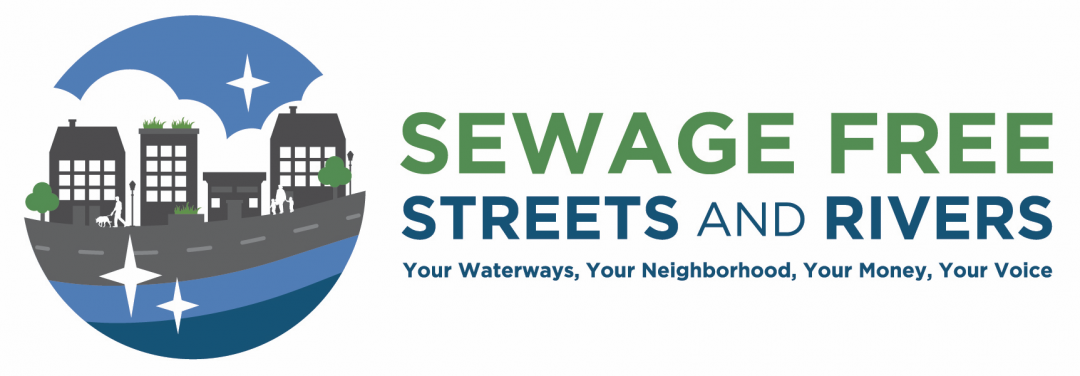

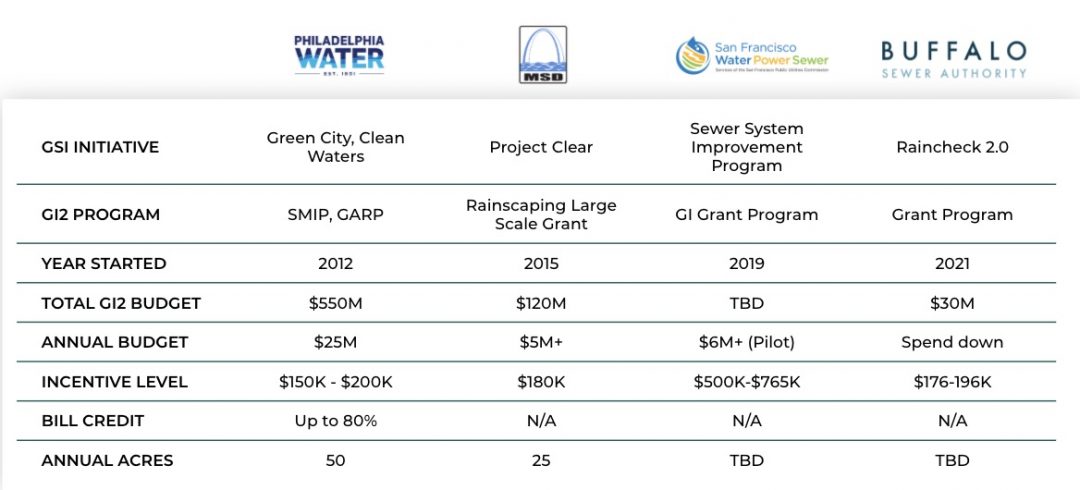
 stormwater management that reduce stormwater volume by allowing it to be uptaken by vegetation, filtered by soils, or stored for reuse. Implementing GI programs (which includes trees, rain gardens, porous pavements, and green roofs) keeps polluted runoff out of municipal systems and out of waterways, rivers, and oceans.
stormwater management that reduce stormwater volume by allowing it to be uptaken by vegetation, filtered by soils, or stored for reuse. Implementing GI programs (which includes trees, rain gardens, porous pavements, and green roofs) keeps polluted runoff out of municipal systems and out of waterways, rivers, and oceans. The
The 